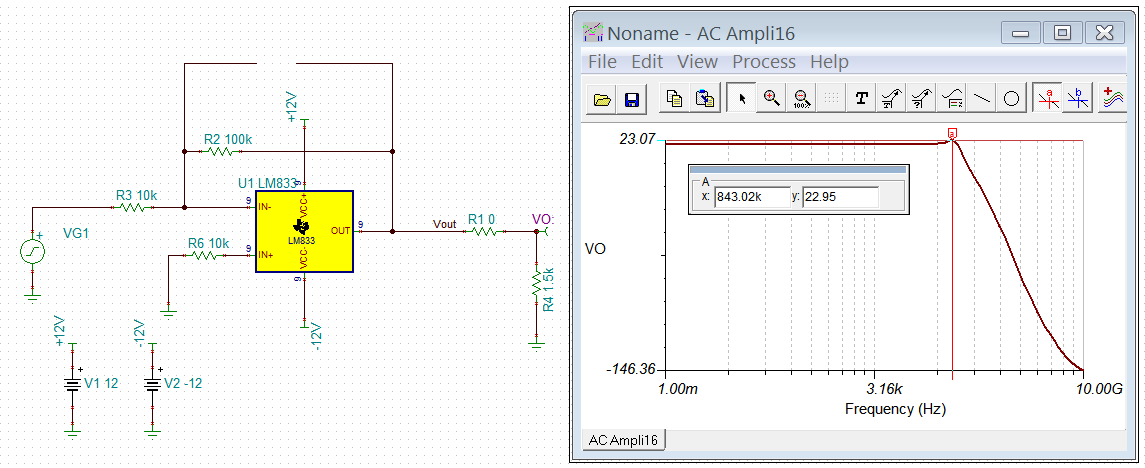I had received the answer and now I have one more question
In this case, what is the excactly meaning of Q?
Resonance frequency or Quality Factor or another ? I'm a little bit confusing of meaning of Q
Please answer me.
=================================================================
1. Can the oscillation occur during configuration as shown in the circuit below?
Yes, LM833 as configured below will oscillate, since there is a Q at approx. 840kHz.
Question:



